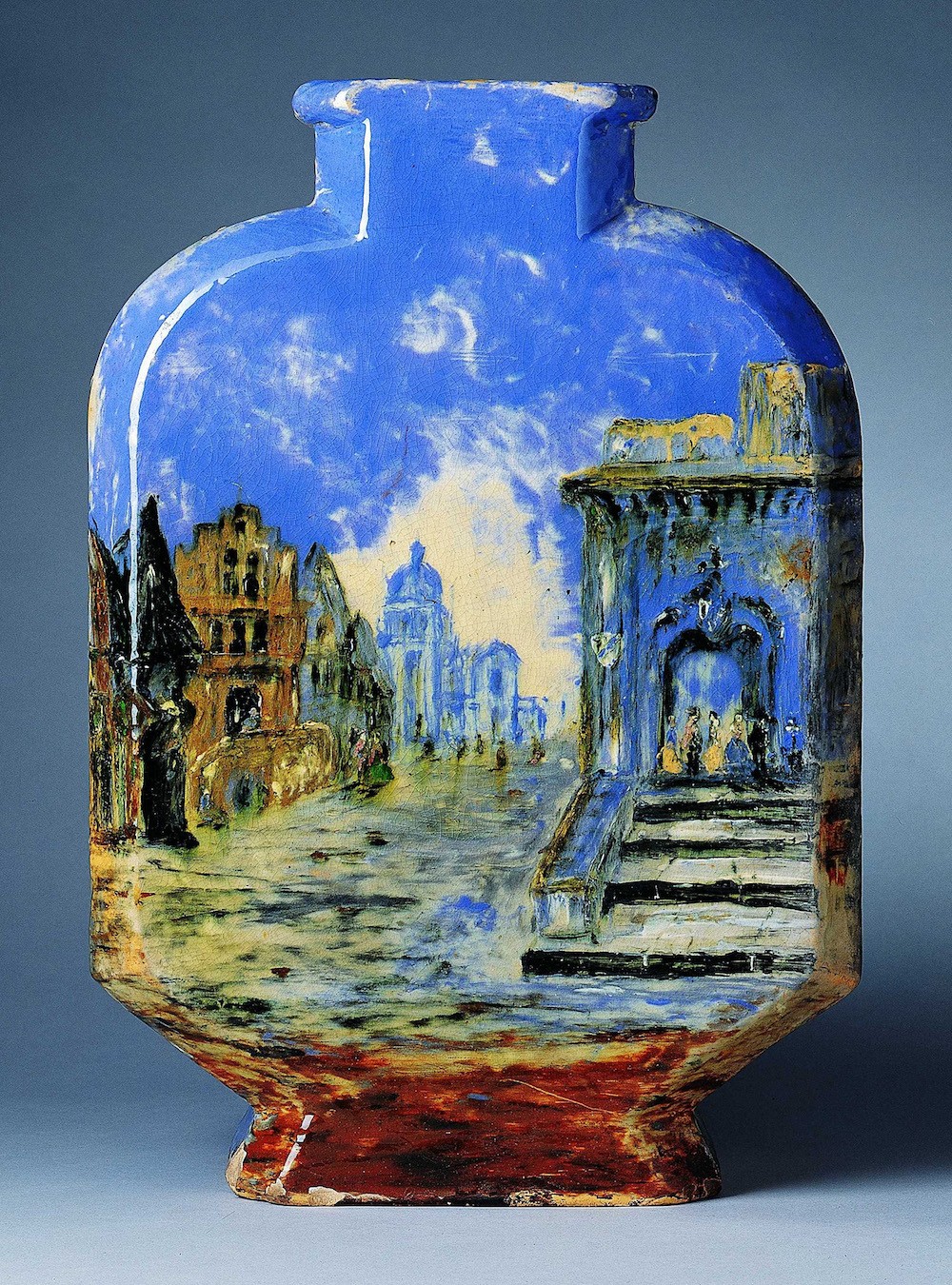Over the past few weeks, I binge-watched a Fringe Festival, journeyed to the Galaxy's Edge and survived a seven-hour wait for Universal's new roller coaster, leaving me seeking shelter from so much overstimulation. Thankfully, the Charles Hosmer Morse Museum of American Art stepped in just in the nick of time, inviting me out on a recent afternoon for a much needed mental health break amidst the intimate institution's latest acquisitions.
It's been a little over a year since I last visited the Winter Park museum (445 N. Park Ave.) in order to observe the ginormous Bierstadt landscape that temporarily graced its gallery (see "Live Active Cultures" April 25, 2018). Today, the room where it was hung has been restored with luminous displays of Tiffany stained glass (the mainstay of the Morse's collection) featuring female figures. Jennifer Thalheimer, the museum's curator and collection manager, led me through that hall and into Iridescence: A Celebration, one of three exhibits that the Morse has added in recent months.
As a rule, the museum focuses on art glass and decorative items from the late 19th and early 20th centuries (roughly 1860-1930). So this new display is something of a departure, in that it brings together a diverse range of eras and objects under the umbrella of "iridescence," otherwise known as the color-shifting sheen seen on natural objects like beetle shells and oil slicks. That includes a couple of Roman vessels that date to the first through third centuries C.E., making them easily the oldest human-made items in the museum; the discovery of similar objects in archaeological digs inspired artists to reproduce their unique surface shine imparted by underground chemical reactions. The ancient artifacts are exhibited alongside their latter-day descendants, including an exquisite trivet inlaid with butterfly wings that was donated by a visitor and an incredibly rare vase from Tiffany's personal collection that Thalheimer found last year in a New York art auction.
I particularly appreciated the way the objects in Iridescence are arrayed not according to age or artist, but by color palette, with a rainbow of groupings ranging from earthy browns and yellows to seafoam greens and blues. Each item is highlighted by specially positioned spotlights that make prosaic pots sparkle like jewels. That's fitting for a museum whose founding director Hugh F. McKean felt (according to Thalheimer) that "if something was honestly made with the intention of being appreciated artistically, then there shouldn't be a hierarchy, so we will oftentimes show fine painting and sculpture alongside some really common things."
That same appreciation for "a humble take on beauty" also applies to Earth Into Art: The Flowering of American Art Pottery, which debuted last fall and will be featured through September 2020. This exhibition traces the development of America's ceramics industry back to the 1876 Centennial International Exhibition in Philadelphia, which theme park fans will be familiar with from Epcot's American Adventure show. Prior to this time, culture was exclusively something the United States imported from Europe or Asia, but an explosion of interest in hand-painted ceramics resulted in decades of American dominance in the industry.
Even more fascinating is the underappreciated fact that women – led by pottery pioneers Mary Louise McLaughlin and Maria Longworth Nichols – were responsible for most of the technical and aesthetic innovations in the art form. China painting was seen as one of the few acceptable occupations for Civil War widows, leading to economic empowerment for women whose incomes were previously dependent on men. I was outraged to learn about how McLaughlin invented a revolutionary underglazing technique though trial and error, only to see male competitors pirate and even patent her techniques; and I was amused to hear about how she told one such troll to pound sand.
The centerpiece of Earth Into Art is a collection of vases emblazoned with portraits of Native American leaders, as captured by early photographers at tribal gatherings during the twilight of America's western expansion. Initially I was a bit taken aback, seeing them as culturally appropriative depictions made by and for white people. But as Thalheimer explained it, these objects represented unifying, progressive political statements within their own time, presenting indigenous people as human beings – each identified by name and tribe – as opposed to nameless caricatures in a romanticized "Cowboys and Indians" context.
I concluded my visit with a peek into Charles Hosmer Morse's Study at Osceola Lodge, a charming vignette re-creating a room from the museum's namesake's original home, which is currently leased to Rollins College and inaccessible to the public. The display includes antique Stickley portiere curtains that Thalheimer unearthed in Morse's closet, along with exquisite oak furniture and family photos. It looks so cozy that if it weren't protected behind glass, I might have curled up by the fireplace for a nap. Instead I headed home through yet another a torrential downpour. If you're seeking shelter from the storm, the Morse's newest exhibits make a refreshing respite.


